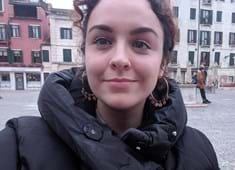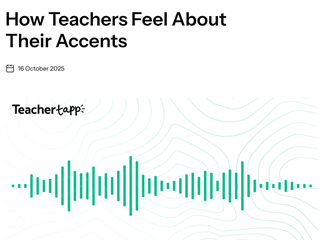Background
Earlier this year the English and Media Centre carried out a survey of (primarily) secondary school English teachers to find out how media literacy was being taught in KS3 English.
We felt this was a much-needed survey given the confused and confusing landscape in which English teachers operate in relation to media literacy, with no statutory guidance in place and different directives coming from at least three different government departments.
In July 2021, for example, the Department for Digital, Culture, Media and Sport (DCMS) published a new Online Media Literacy Strategy, which categorised the following from the National Curriculum Programme of Study for English as ‘media literacy activity’:
Throughout the English programmes of study, students are expected to read and discuss a wide range of texts for both pleasure and information. In Key Stage 2, Year 5 and 6 students are expected to distinguish between statements of fact and opinion and make comparisons between texts. This critical reading of texts is built upon in Key Stage 3, where students are expected to make critical comparisons across texts and understand increasingly difficult texts by making inferences and referring to evidence in the text. At Key Stage 4, students are expected to distinguish between statements that are supported by evidence and those that are not, and identify bias and misuse of evidence. They are also expected to make critical comparisons, refer to context and draw on knowledge and skills from wider reading to help them understand and critically evaluate texts.
This seems disingenuous at best. We know that there is no media strand in the current National Curriculum in England and that the critical work referred to is done almost exclusively in the context of reading literary fiction and non-fiction. The DCMS strategy also claims that elements of media literacy are already being delivered through directives in the programmes of study for Citizenship, Computing and History – a twisting of the truth that is worthy of the misinformation the strategy itself sets out to combat.
In April 2022, in direct contrast to what was said in the DCMS strategy document, an All-Party Parliamentary Group (APPG) on Media Literacy published a report recommending changes to the English curriculum so that media literacy skills could be taught explicitly through the integration of
core online media literacy skills such as fact-checking, the creation of digital media and the concepts of disinformation, misinformation and malinformation within the English national curriculum.
According to the APPG report, the Department for Education (DFE) responded in similar vein to the DCMS strategy, stating that
there are many opportunities across the curriculum to improve digital literacy, in subjects such as Computing, English, History and Citizenship.
The APPG expressed frustration at this response.
This reply frustratingly conflated digital literacy with media literacy. Currently, the programmes of study for Citizenship, History and English across all key stages do not explicitly refer to digital media or media literacy skills such as identifying misinformation, disinformation and malinformation.
To add further context, in October 2023, the government passed the Online Safey Act. The act prioritises protecting vulnerable users such as children from seeing harmful content by giving Ofcom the power to fine social media companies that fail to comply to rules, for example, the rule to remove illegal content or enforce age limits on their platforms. The bill states that Ofcom has a duty to promote media literacy but there is no mention of education in schools.
The government’s approach of sharing the responsibility of media literacy education in schools across different government departments and then different subjects within the curriculum means that no one is truly accountable (or even knows that they are supposed to be teaching media literacy).
English has traditionally shared close links with media teaching and does have at its core a commitment to developing skills of critical thinking and critical analysis, even if these are not (contrary to DCMS and DFE opinion) an exact fit for the skills of media literacy. With that in mind, we thought that it would be useful get a sense of what English teachers are doing in relation to media literacy at KS3, where they do have some freedom to teach beyond the narrow constraints of the GCSE syllabus. This is also a crucial age when students are increasingly engaged with online content, including social media. At the age of 13, Ofcom reports that 97% of children own a mobile phone and 93% have an online profile.
Headline findings
- Most teachers surveyed feel media literacy is absent, limited or not taught explicitly enough in English lessons.
- Most teachers surveyed feel that media literacy is important for our students’ futures and needs our urgent attention.
- The lack of statutory guidance means the consideration of media literacy when planning SOWs is far from consistent across different schools.
- Most teachers agree that media literacy means to critically analyse media texts and yet the data shows that in practice, there is confusion about what media subject knowledge and skills are.
- Most of the time, media forms are used in class as a creative response activity, to facilitate a discussion or way into a text or to explore interpretation through looking at adaptations. Media forms themselves are not the subject of scrutiny and analysis.
- Newspaper articles are the main media form covered in KS3 English lessons, mainly, it would seem, because this form is assessed at KS4. However, the data shows that whilst newspaper articles were taught most, newspaper front covers are taught much less often. It is hardly a comprehensive study of this media form if it misses out the front page. This also means that writing newspaper articles, which is the most common ‘media’ activity in English lessons is not necessarily part of a comprehensive study of the form and its editorial processes.
- There is a huge lack of variety when it comes to which media forms are used in lessons so it is unlikely students will be able to evaluate editorial processes of different media forms or critique a range of media forms.
- There appears to be no reference to or teaching of ownership in relation to news values and bias.
- There appears to be very little reference to or teaching of political contexts in relation to news values and bias.
- Many teachers feel that the GCSE Language specification guides the content at KS3 and until this changes there is not much room for media literacy.
- Most of the time, media forms are not part of the study of representation. We know how powerful representation is and we know what media forms our students are consuming most (audio-visual content). It seems hard to believe these lessons would prepare them to be critical of what they encounter in life.
- Many teachers thought the way representation was taught wasn’t good enough.
- Most teachers agree that English has a role when it comes to media literacy.
- Generally, respondents were not aware of what other subjects in their school were doing to teach media literacy.
- Nearly all respondents surveyed said their school does not have a media literacy policy.
- Without a space for media literacy, schools struggle to respond to media controversies as they arise.
- Generally, teachers are not confident their students have a range of media literacy skills at the end of KS3.
Recommendations
- Detailed statutory guidance on media literacy to provide consistency across schools.
- Making media literacy an explicit part of the National Curriculum, either through the inclusion of Media Studies as a compulsory subject for all or making it an important part of the English curriculum.
- Designing the curriculum so that students can critically analyse examples from a range media forms that they encounter in their daily life, including audio-visual forms and social media content.
- Making room for production skills as part of the curriculum.
- Including the study of media industries and media contexts as part of the curriculum.
The government’s approach of sharing the responsibility of media literacy education in schools across different government departments and then different subjects within the curriculum means that no one is truly accountable. Given the patchy way media literacy is currently taught and its fundamental importance for modern life and society, there is a strong argument for Media to be a core subject. However, if it can’t be a core subject on its own, English would be the right place for it, as it was in the past.




